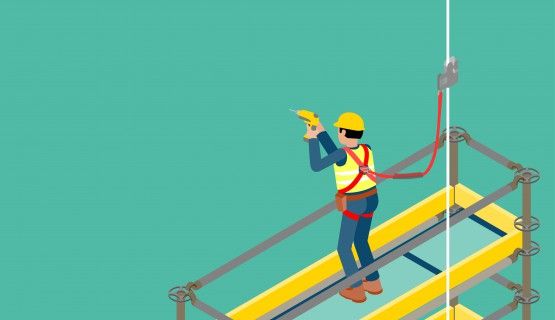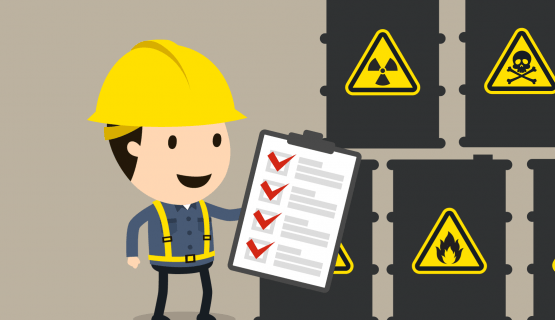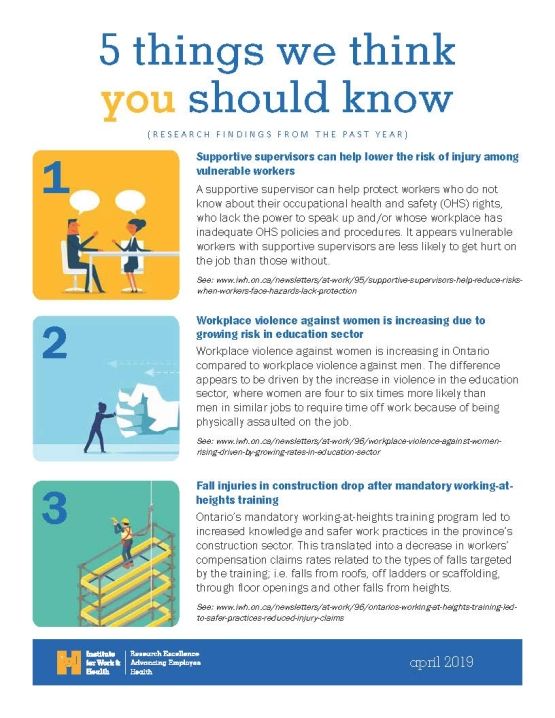
Supportive supervisors can help lower the risk of injury among vulnerable workers
A supportive supervisor can help protect workers who do not know about their occupational health and safety (OHS) rights, who lack the power to speak up and/or whose workplace has inadequate OHS policies and procedures. It appears vulnerable workers with supportive supervisors are less likely to get hurt on the job than those without.

Workplace violence against women is increasing due to growing risk in education sector
Workplace violence against women is increasing in Ontario compared to workplace violence against men. The difference appears to be driven by the increase in violence in the education sector, where women are four to six times more likely than men in similar jobs to require time off work because of being physically assaulted on the job.

Fall injuries in construction drop after mandatory working-at-heights training
Ontario’s mandatory working-at-heights training program led to increased knowledge and safer work practices in the province’s construction sector. This translated into a decrease in workers’ compensation claims rates related to the types of falls targeted by the training; i.e. falls from roofs, off ladders or scaffolding, through floor openings and other falls from heights.

Working long hours has been linked to an increased risk of diabetes among women
According to a study of 7,300 workers aged 35-74 over a 12-year period, women who worked 45 hours or more a week faced a higher risk of developing diabetes than women who worked 35-44 hours a week. Among men who worked long hours, however, the risk of developing diabetes tended to go down. Various factors could explain this gender difference.

Employers spend an average of $1,300 per employee a year on workplace health and safety
Ontario employers spent an average of $1,300 per worker on workplace health and safety in 2017. Of this estimated total per worker, 58 per cent was spent on organizational management and supervision (which included the work of joint health and safety committee members), 22 per cent on staff training, 14 per cent on personal protective equipment, and less than five per cent on each of professional services and new capital investments.
